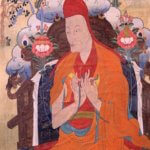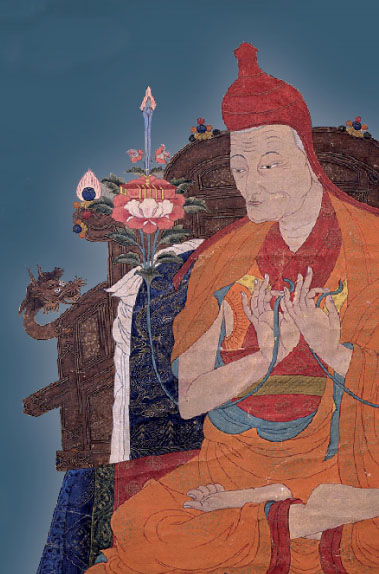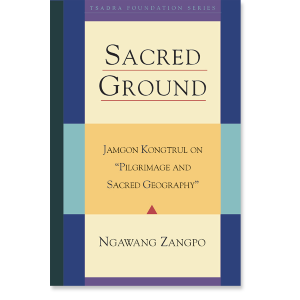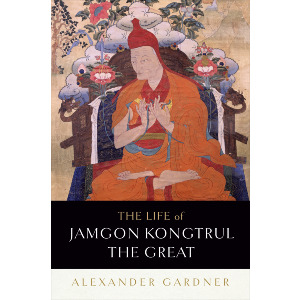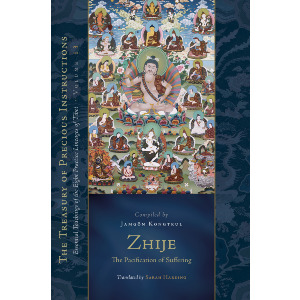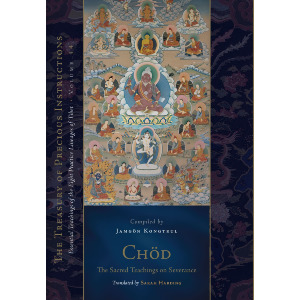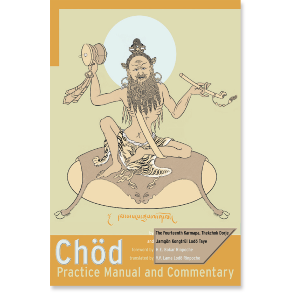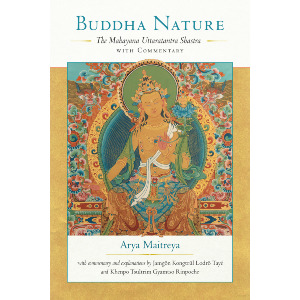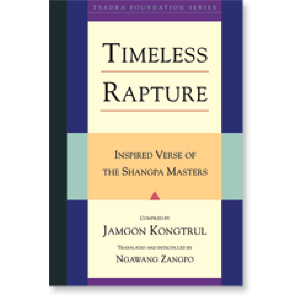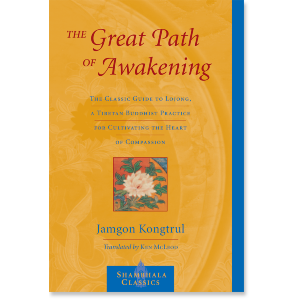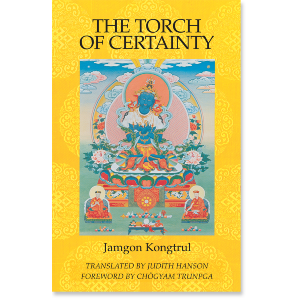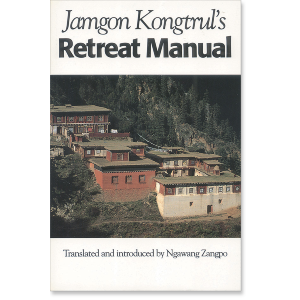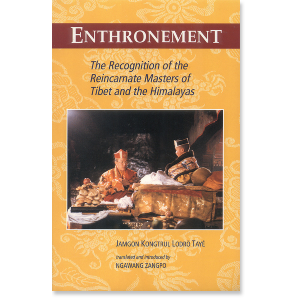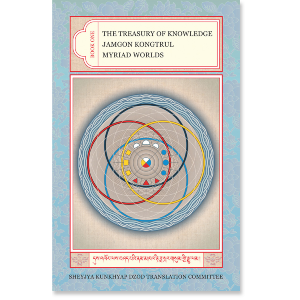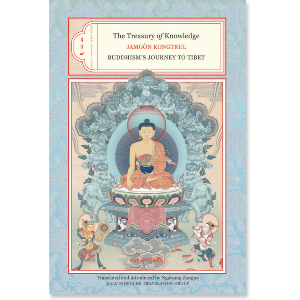| The following article is from the Summer, 2001 issue of the Snow Lion Newsletter and is for historical reference only. You can see this in context of the original newsletter here. |
Sacred Ground:
Jamgon Kongtrul on
Pilgrimage and Sacred Geography
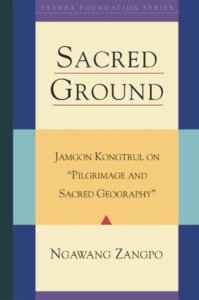
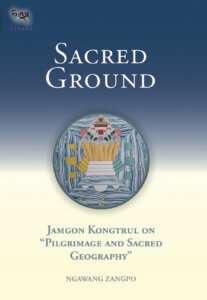
Sacred Ground describes two journeys: a journey outward to specific pilgrimage places in Eastern Tibet; and a journey inward, to the sacred world of tantra, accessible through contemplation and meditation. It sheds light on Himalayan Buddhists' concepts of sacred land, places of pilgrimage in tantric Buddhism, and how pilgrimage is undertaken. It enhances our appreciation of the world and its sacred aspect everywhere—first and foremost, wherever we sit now. On the basis of a judicious choice of rare Tibetan texts, translated here for the first time, correlating inner and outer pilgrimage, this book is of considerable value to the Buddhist practitioner.
"Sacred Ground is a revelation! Here for the first time in any Western language are several key ideas: the exact way outer sacred lands relate to points in the tantric body and the parallel terminology between the types of sacred ground and the stages of attainment. Ngawang is precise and to the point."
—HUBERT DECLEER, Director of the Tibetan Studies Program of the School for International Training, and author of Lightning Terror
"Ngawang Zangpo has again given us a well-researched and richly informative setting to another jewel from Jamgon Kongtrul's writings. Anyone who is a pilgrim, in any sense of the term, will find this book fascinating."
—RICHARD BARRON (CHOKYI NYIMA), translator of Buddhahood without Meditation and The Way of Abiding
"Sacred Ground is like a rich mineral spring bubbling over with important information that will help Buddhists better appreciate the tremendous talent and profound spiritual realization of these great lineage holders and their lineages which through their kindness have passed into our hands."
—Sangye Khandro, translator of Perfect Conduct and The Life of Liberation of Princess Mandarava
Jamgon Kongtrul Lodro Taye(1813-99) was one of the most outstanding Tibetan writers and teachers of his time.
The following is an excerpt from the Preface.

Kongtrul's Pilgrimage Guide to Tibet is a guide book for pilgrimage to a tiny area of sacred ground in Eastern Tibet. It was written in the mid-1800's for Tibet's Buddhists who could contemplate such a spiritual journey. It appears here in translation for a modern, non-Tibetan readership, to shed light on Himalayan Buddhists' concepts of sacred land, places of pilgrimage in tantric Buddhism, and how pilgrimage is undertaken. This book is written with the armchair or meditation-cushion traveler in mind. I do not intend to encourage readers to contemplate the difficult and dangerous journey to this remote place, but to enhance our appreciation of the world and its sacred aspect everywhere—first and foremost, wherever we sit now. I hope that this view of a remote land will enrich our daily life at home.
Sacred Ground presents the subject of pilgrimage places as understood by tantric Buddhists of the Himalayan region. In content and intent, this book follows Jamgon Kongtrul's Retreat Manual and Enthronement. Like these two books, Sacred Ground focuses on an important aspect of Tibetan spiritual life as explained by Jamgön Kongtrül, a major meditation master and writer of the nineteenth century. As in the preceding books, I have liberally supplemented the translation of one central text with excerpts or supporting documents culled from Kongtrül's extensive writings. My overriding concern in each of these three works has been loyalty to the spirit in which they were written; thus, my reliance on Kongtrül's work and inclusion of information specific to his life and times. Nineteenth-century Tibet is a context as far removed from our modern world as can be imagined, yet I feel that our study and practice of Buddhism can be improved by consideration of the experience of that era's masters. At the very least, study of Kongtrül can help us understand modern Tibetans' spiritual life. At best, his work leads us to discover new aspects of our own experience and practice of Buddhism.
Although Kongtrul wrote for an audience that could undertake the pilgrimage he describes, he also wrote the book to transmit a universal message: that sacred ground is to be found everywhere.
Sacred Ground includes a detailed description of a piece of land in Eastern Tibet that is distant and inaccessible to most of us. Although Kongtrül wrote for an audience that could undertake the pilgrimage he describes, he also wrote the book to transmit a universal message: that sacred ground is to be found everywhere. Buddhism has been called a "guest religion," a way of spirituality that adapts to its host culture. Shakyamuni Buddha tailored his teaching to the predominant spiritual and cultural reference points of his day, yet Buddhism was never constrained by the geography and mentality of India in 500 B.C. To find living Buddhism today, one must look not only to the land and people of its origins, but to such countries as Tibet, Thailand, Burma, or Korea. These countries, which were once, in Buddhist terms, places of darkness, became imbued with enlightenment; they became sacred ground. This transformation continues nowadays: my teacher was fond of remarking that "the sun of Buddhism is setting in the East and rising in the West."
Buddhism has been called a "guest religion," a way of spirituality that adapts to its host culture.
If we are to fully experience our intrinsic enlightenment, our "buddha-nature," we must study, reflect upon, and put into practice the path shown by those who have already uncovered their innate awakening. Our respect and appreciation for past Buddhas and Bodhisattvas should increase our respect and appreciation for our own and others' present inner wealth; in the same way, our faith and interest in the sacred ground far from home should enhance our sensitivity to the wonders of the world where we live. I believe this to be the spirit in which Kongtrül wrote this book and I have tried my best to honor it in this translation.

